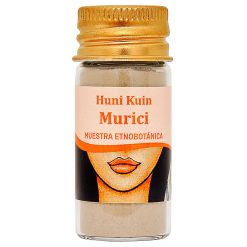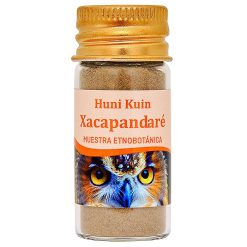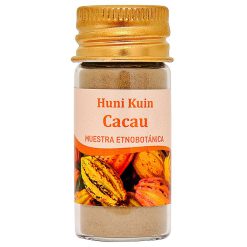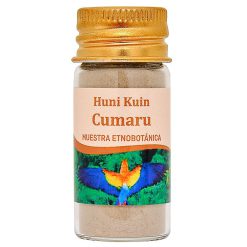Cosmovisión Huni Kuin
Es importante recordar que para los Huni Kuin todas las plantas de la selva son sagradas y son medicina. Una de las costumbres más arraigadas de esta tribu son los baños de plantas, que realizan con mucha frecuencia. Para estos baños, escogen una planta que necesitan (tienen un conocimiento asombroso de la flora que les rodea), la hierven, y se bañan con este agua aromática.
Este baño tiene cualidades terapéuticas inimaginables, siendo capaz de restablecer la energía, de relajar daños musculares, de desinflamar zonas hinchadas del cuerpo, de alinear los chacras o de alejar los malos pensamientos o las preocupaciones. No es necesaria la recomendación de ningún chamán o pajé (el hiervero de la comunidad) para este baño.
Esta acción que puede parecer tan simple, nos muestra la sabiduría intrínseca de todos los miembros de una comunidad con respecto a la naturaleza a la que pertenecen y nos adentra en su cosmovisión como seres que pertenecen a la selva sin que exista una diferencia entre ella y los hombres que la habitan.
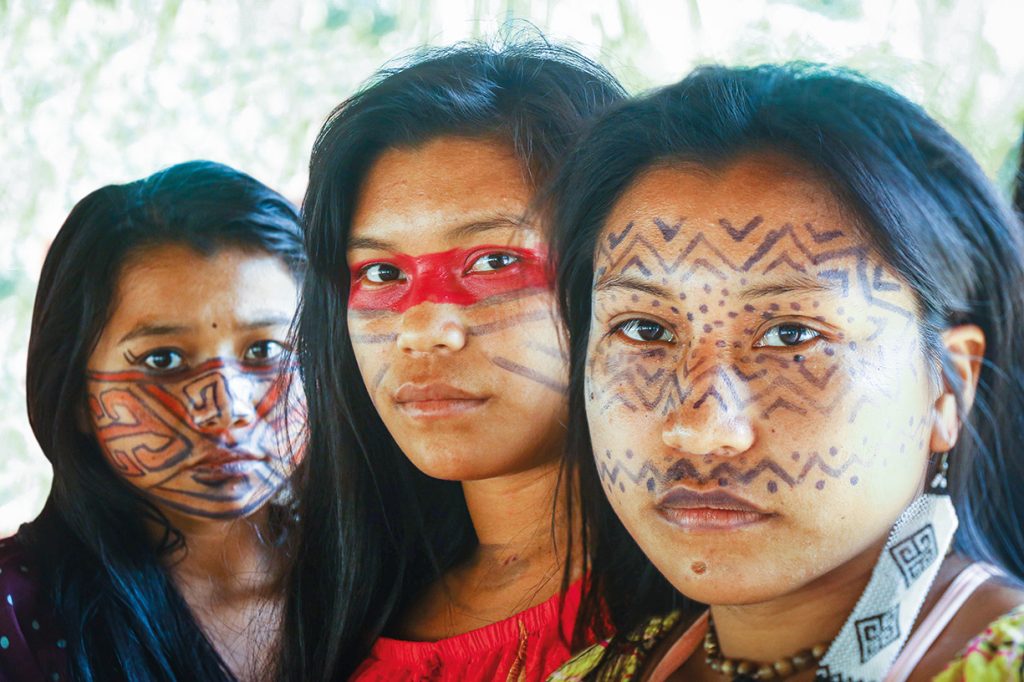
El “pajé”
El “pajé” tiene conexión con las plantas. Tiene un conocimiento muy completo de todas las plantas que habitan en la selva, pero además tiene una conexión espiritual con estas plantas y con todos los medicamentos naturales. Es una figura tan importante como el chamán, aunque existe entre ellos una pequeña diferencia.
El terapeuta “pajé” se comunica con las plantas y su función es curar cualquier tipo de enfermedad o molestia a través de las plantas y de medicina natural hecha con plantas. El chamán se comunica con los espíritus y ése es su trabajo. Van a verle cuando necesitan algún trabajo relacionado con un espíritu.
Los chamanes tienen el conocimiento que viene de otras vidas anteriores y también de sus ancestros. Ellos no decidieron ser chamanes, si no que nacen chamanes. Su rol es contactar con los espíritus. Los chamanes, así como los pajés, durante largos periodos de iniciación a diversos procesos, hacen una dietas concretas, en las que, por ejemplo no comen carne, ni pescado, ni sal, ni azúcar, ni tener relaciones sexuales, así se muestran puros frente a los espíritus y pueden conectarse con ellos.
Para el mundo occidental es realmente difícil de comprender todo este conocimiento, pero en esta comunidad desde pequeños se instruye a los niños en el conocimiento de plantas, los animales, a los ancestros, a los elementos, a la Madre Tierra, al astral y la espiritualidad… Si estás conectado con el aquí y el ahora, recibirás todas las instrucciones para aprender y crecer.
El proceso de aprendizaje del yerbero (pajé) es bien diferente a aquel del chamán. A menos que trate con hojas venenosas, el yerbero no está sujeto a ayunos y puede desenvolver sus actividades normales de caza y vida conyugal. El adquiere su conocimiento a través del aprendizaje con otro especialista y requiere de una memoria y percepción agudas.
A pesar del conocimiento que tienen tanto el pajé como el chamán, no se vuelven figuras de autoridad. Existe una libertad que está por encima de cualquier hombre, todo hombre es libre de hacer lo que quiera, y todos están sometidos a las leyes implacables de la selva, y no de los hombres. No existe el “yo” como algo separado de la comunidad o de la selva.
Cuando alguien transmite una información no lo hace desde el ego, así como el resto no escucha desde la subyugación. Existe una plena conciencia de que la transmisión de la información tiene su razón de ser más allá de la voluntad de los hombres. No hay tanto pensamiento y eso se debe a que el “yo” no tiene tanta importancia.
Todo es conciencia y conexión. Las cosas son más simples porque la vida allá es de por sí complicada. La Madre Tierra no tiene fronteras, es un único organismo y los humanos somos parte de ella, sólo tenemos que escucharla para conectarnos con ella y por tanto con nosotros mismos.
En su cosmovisión los Huni Kuin imaginan una colina que representa el mundo. En su cima está el centro y de ella nacen todos los ríos que se alargan hasta no dejar ver su otra orilla. En la parte baja vive una tarántula dueña del frío y de la muerte. El cielo se extiende por debajo de la tierra hasta unirse en el horizonte.
Los Huni Kuin se imaginan viviendo en la cima de la colina, mientras que los los “huni bemakia”, es decir, el resto de humanos que no pertenecen a su tribu o su comunidad lingüística, viven abajo. Actualmente se encuentran ambos en posiciones más cercanas, pues los huni kuin han bajado de la cima y los blancos han logrado cruzar los serpentinos ríos gracias a la ayuda de un gran cocodrilo.
Los Huni kuin aseguran que los chamanes reales, los “mukaya”, los que portaban dentro de su cuerpo la sustancia chamánica a la que llaman “muka”, han muerto. Pero esto no les limita para practicar otras formas de chamanismo, consideradas menos poderosas, pero igualmente eficientes. Así, afirman al mismo tiempo que no existen chamanes y que existen muchos.
Una característica del chamanismo huni kuin es la capacidad de sanar o de causar una enfermedad. La invisibilidad y la ambigüedad de este poder es vinculada a su transitoriedad. Chamanismo es más un evento que un papel o una institución fija de la sociedad. Esto se debe también a las duras reglas de abstinencia que requiere el ser chamán: no puede comer carne ni tener relaciones con mujeres.
El uso del ayahuasca es una práctica colectiva entre los Huni kuin, experimentada por todos los hombres y mujeres, adultos y adolescentes que desean ver “el mundo del ayahuasca”. El “mukaya”, el chamán, no necesita ninguna sustancia, ninguna ayuda externa para comunicarse con el lado invisible de la realidad.
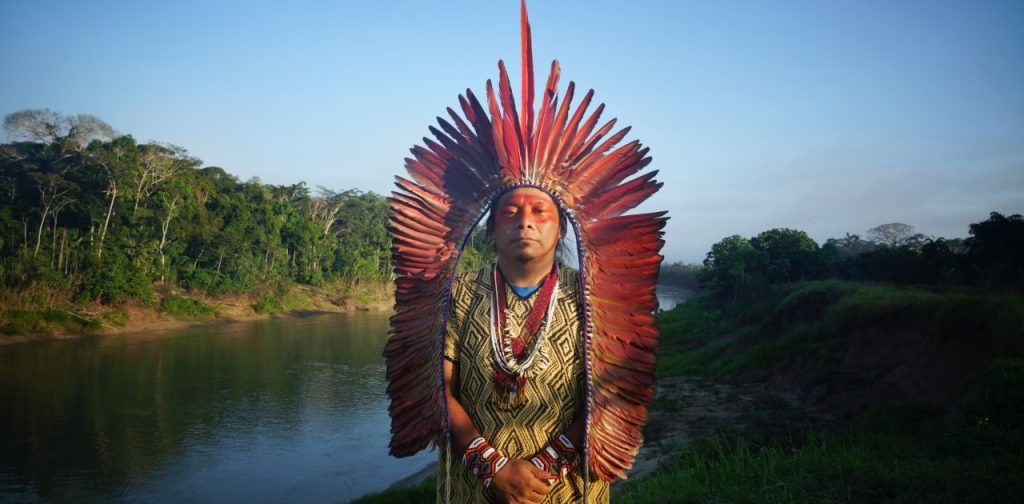
El Yuxin
Todos los hombres adultos son un poco chamanes en la medida en que aprenden a controlar sus visiones e interacciones con el mundo de los “yuxin”, que traduciríamos de alguna manera como “el mundo de los espíritus”.
Esto es debido al uso repetitivo, frecuente y popular del ayahuasca, que consumen de dos a tres veces por mes, así como a los largos paseos solitarios que realizan algunos ancianos sin un objetivo práctico, como podría ser la caza o la búsqueda de yerbas medicinales. Esas caminatas están más bien destinadas a establecer un vínculo activo con el mundo de los “yuxin”.
El ayahuasca, lo llaman “nixi pae”, que viene de una una liana giganta (marirí) y la chacruna, un árbol, ambas plantas tienen unas hermosas flores. La mezcla de estas dos plantas en una preparación específica da como resultado la bebida de ayahuasca. Es normal que en las comunidades estas plantas se encuentren rodeando la aldea, por lo que no hay que adentrarse demasiado en la selva para encontrarlas.
Se necesita al menos todo un día de preparación (a veces incluso más), y normalmente se cuece más medicina de lo necesario en una ceremonia, para que sobre. Así, tienen en la comunidad suficiente medicina preparada para cuando sea necesario.
Otra de las medicinas sagradas que utilizan en las ceremonias es el rapé, que se prepara con hojas secas de tabaco (por temporadas plantan ellos mismos, o le compran a otras comunidades que cultivan por la zona) y cenizas de otros árboles de la selva, todo machacado hasta crear un polvo muy fino.
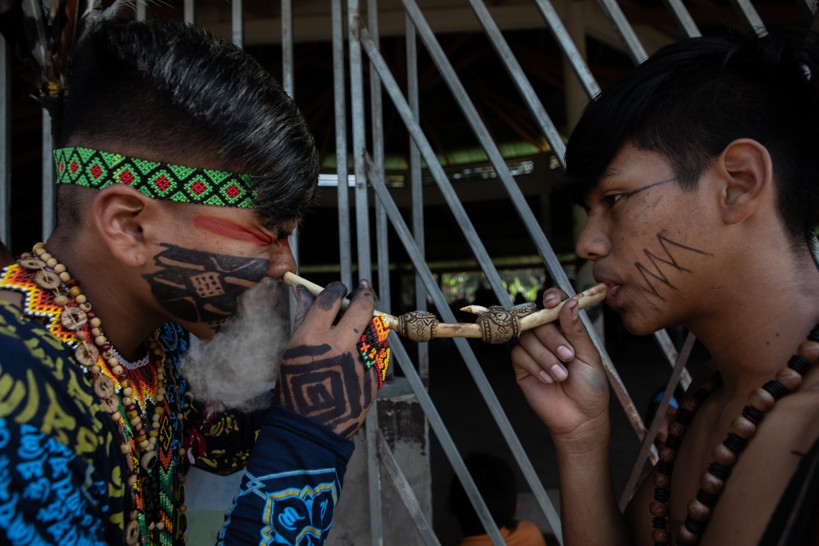
Este polvo de tabaco se utiliza esnifándolo mediante un kuripé. El rapé se mete en el kuripé, luego un miembro de la comunidad inserta un lado del kuripé en una fosa nasal mientras que otro sopla, proyectando la sustancia que esnifa el primero. Hay muchas variedades de rapé diferentes dependiendo de las plantas que se usen para mezclar con el tabaco. Cada una responde a un espíritu y a un propósito diferente, pero en todas las fórmulas está el propósito de clarificar la mente y poder tomar las decisiones acertadas, siendo esta una propiedad misma de la planta del tabaco.
Otra medicina muy importante que utilizan los Huni Kuin es “sananga”. Son los extractos de las raíces de un árbol mezclados con otros líquidos, normalmente con limón, y se utiliza poniendo unas gotas en el ojo. Te limpia los ojos profundamente y mejora tu vista, además de darte una energía limpia y concentrada muy fuerte.
Hay dos tipos de sananga, uno para mujeres y otro para hombres, aunque ambos son utilizados indistintamente por unos y por otras. El sananga de las mujeres es mucho más suave, no produce tanto ardor en el ojo, te ayuda a estar tranquilo, a meditar, tiene la cualidad de relajarte sin perder un estado de concentración
Tiene energía femenina y sabiduría. El sananga para hombres, sin embargo es muy fuerte, de las medicinas más fuertes que he probado en mi vida. Se utiliza sobre todo antes de emprender un viaje, o para ir a cazar, o cuando alguien necesita una limpieza muy fuerte, una purga.
En las ceremonias de ayahuasca de los Huni Kuin es muy común utilizar durante el cierre “kambó”. Esta medicina consiste en un extracto del veneno de un determinado sapo (kambó) del Amazonas que contiene unas increíbles cualidades desintoxicantes.
Es capaz de limpiar el organismo tanto corporal como etéreo, es decir, lo mismo puede romper una piedra en el riñón y expulsarla del organismo como sacar la rabia acumulada que uno carga en su personalidad, a veces inconscientemente, a lo largo de los años. Esta medicina es esencial para los Huni Kuin.
Nada de esto es algo que simplemente se “consume”. Son medicinas con las cuales hay que tener mucha conciencia porque realmente son muy potentes, y ciertamente pueden ayudar a sanar enfermedades tanto somáticas como psicológicas pero deben ser tomadas con la intención y la conciencia necesarias. Todas estas medicinas tienen la cualidad de poner en consonancia la mente, el cuerpo y el espíritu, equilibrando cada una de estas fuerzas.
Cada medicina se utiliza de manera ceremonial siempre. Y las ceremonias suceden siempre que sea necesario, y esa necesidad se habla en la comunidad, en armonía con los espíritus y los ancestros. La medicina siempre nos trae una información sobre lo que estamos viviendo. Las ceremonias pueden ser familiares, o de toda la comunidad, o junto con otras comunidades… No hay un contexto determinado, simplemente hay una profunda conexión.
Las medicinas nos ponen en conexión con todo lo que no pueden ver nuestros ojos pero existe. Son un camino para curarnos y para transformarnos, tienen la función de poner en consonancia el cuerpo, la mente y el espíritu.
Nos conectan con el misterio de la vida, nuestra luz, nuestra alma, nuestro corazón, con la Madre Naturaleza, nuestros ancestros, el astral… Se necesita una determinada frecuencia para poder conectar con este otro mundo, y este es el objetivo de las plantas sagradas: el de hacerte vibrar en la misma frecuencia que vibra la selva, la Madre Naturaleza.
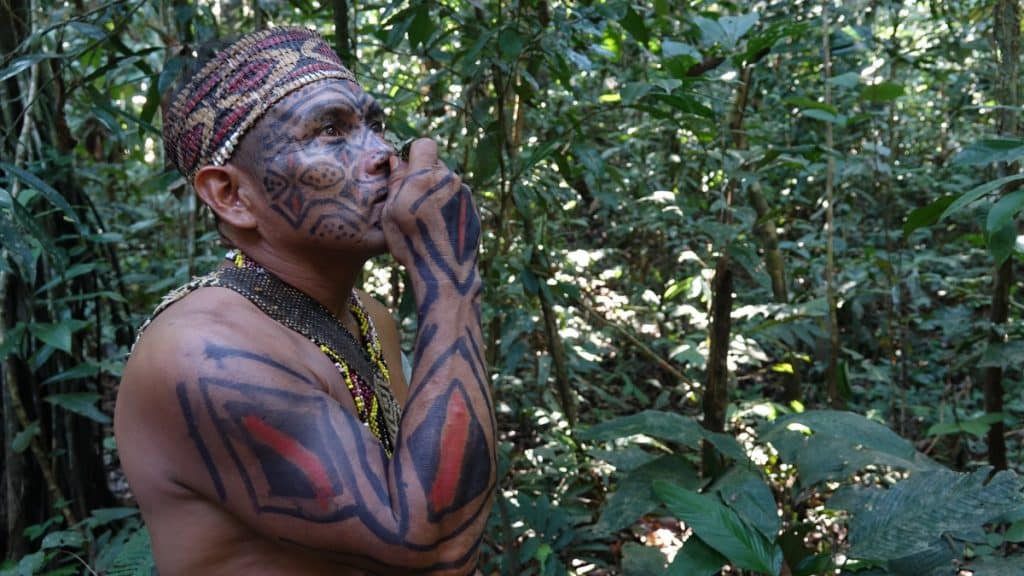
“Yunxidad” es una palabra que recoge la cosmovisión chamánica de los Huni kuin, una visión que no considera lo espiritual (yuxin) como algo sobrenatural o sobrehumano, localizado fuera de la naturaleza y fuera de lo humano, si no que entiende que lo espiritual como la fuerza vital (yuxin), que permea todo lo vivo en la tierra, los hombres, la selva, los animales, las aguas y los cielos.
En el día a día, vemos un lado de la realidad, donde este parentesco universal de las cosas vivas no se revela: vemos cuerpos y su utilidad inmediata. En estados alterados de conciencia, como por ejemplo tras ingerir ayahuasca, el ser humano se enfrenta con el otro lado de la realidad, en que la espiritualidad que habita ciertas plantas o animales se revela como “yuxin”. Por manifestarse tanto como fuerza vital cuanto como alma o espíritu con voluntad y personalidad propias, ningún término capta bien este carácter efímero y polivalente del “yuxin”.
En la región del Purus, los propios Huni kuin traducen “yuxin” por alma cuando se refieren a los yuxin que aparecen de noche o en el crepúsculo de la selva, bajo forma humana. El uso de esta palabra viene de la convivencia con los caucheros, que también ven y hablan de almas. Cuando se habla del “yuda baka yuxin” o del “bedu yuxin” de la persona, se usa más espíritu.
La actividad del chamán que intenta conectar y relacionarse con los “yuxin” es indispensable para el bienestar de la comunidad. La causa última de todo malestar, enfermedad o crisis tiene sus orígenes en este lado “yuxin” de la realidad. El rol del chamán es ser el mediador entre los dos lados. Los lugares con mayor concentración de yuxin son los barrancos, los lagos y los árboles.
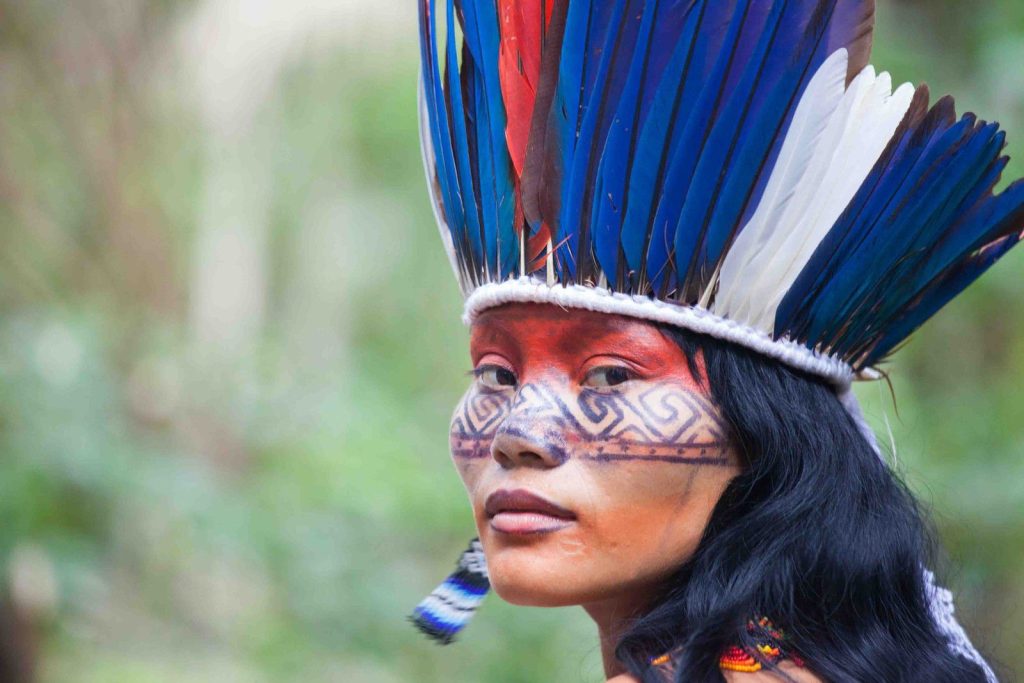
El Muka
El poder de los yuxin, que se revela en su capacidad de transformación, es llamado muka. Muka es una cualidad chamánica a veces concretizada como sustancia. El ser con muka tiene el poder espiritual de matar y de curar sin usar fuerza física o veneno (remedio: dau). El ser humano puede recibir muka de los yuxin, lo que le abre el camino para tornarse chamán, pajé, mukaya. Mukaya significa hombre con muka o, en la traducción de Deshayes, “pris par l’amer” (“tomado por el amargo”).
El chamán tiene un papel activo en el proceso de acumulación de poder y conocimiento espiritual, pero su iniciación acontecerá solamente a partir de la iniciativa de los yuxin. Si los yuxin no lo escogen, no lo toman, poco aportan sus paseos solitarios en la floresta. Una vez abordado por ellos, en cambio, el aprendiz se torna enfermo a los ojos de los humanos (“se quedan enfermos cuando llega mujer cerca de ellos”). El punto débil del yuxin es el cuerpo, el del hombre es su yuxin; la “yuxindad” amenaza el cuerpo del hombre, y el cuerpo, la sangre (femenina) amenaza la cabeza de los yuxin.
Si el hombre que fue tomado quisiera seguir el camino del mukaya, se somete a dietas prolongadas y severas (sama) y procura otro mukaya para instruirlo.
Otra característica del chamanismo kaxinawá (Huni Kuin), expresada por el nombre mukaya, es la oposición entre el amargo (muka) y el dulce (bata). Los Kaxinawá distinguen dos tipos de remedio (dau): los remedios dulces (dau bata) son hojas de la floresta, ciertas secreciones animales y los adornos corporales; los remedios amargos (dau muka) son los poderes invisibles de los espíritus y del mukaya.
El proceso de aprendizaje del yerbero es bien diferente a aquel del chamán. A menos que trate con hojas venenosas, el yerbero no está sujeto a ayunos y puede desenvolver sus actividades normales de caza y vida conyugal. El adquiere su conocimiento a través del aprendizaje con otro especialista y requiere de una memoria y percepción agudas.
La primera señal de que alguien posee la potencia para ser un chamán, para desarrollar una relación con el mundo de los yuxin, es el fracaso en la caza. El chamán desenvuelve una familiaridad tan grande con el mundo animal (o con los yuxin de los animales), que al conseguir entrar en diálogo con ellos no consigue más matarlos.
“Y andando en el mato, el animal está hablando conmigo, dice. Cuando ve al venado, entonces llama ‘hey, cuñado’, dice, entonces se queda parado. Cuando ve un puerco, ‘ah’, llama, ‘ah, mi tío’, y ahí se queda. Entonces, en nuestras palabras, dice ‘em txai huaí!’ (hey, cuñado!), y no come” (Siã Osair Sales, comunidad Huni Kuin, Amazonas brasileño).
Durante los momentos de alteración de conciencia, el “bedu yuxin” viaja, libre del cuerpo, en el sueño, o cuando la persona está en trance, bajo el efecto del rapé o del ayahuasca. Estos viajes cumplen objetivos más allá de la sanación de una enfermedad concreta. Son excursiones exploratorias. Procuran entender el mundo, sus motivaciones, sus causas, sus efectos, sus conexiones.
Así mismo, para los Huni Kuin existen varios tipos de enfermedad: una material (veneno) y otra espiritual (poder). La dolencia causada por el veneno es por cuenta del dauya (yerbero), mientras que la enfermedad provocada por el poder espiritual (muka) tiene como enemigo culpable a un mukaya (chamán). Existe además un tercer tipo: la enfermedad causada por los “yuxin”.

